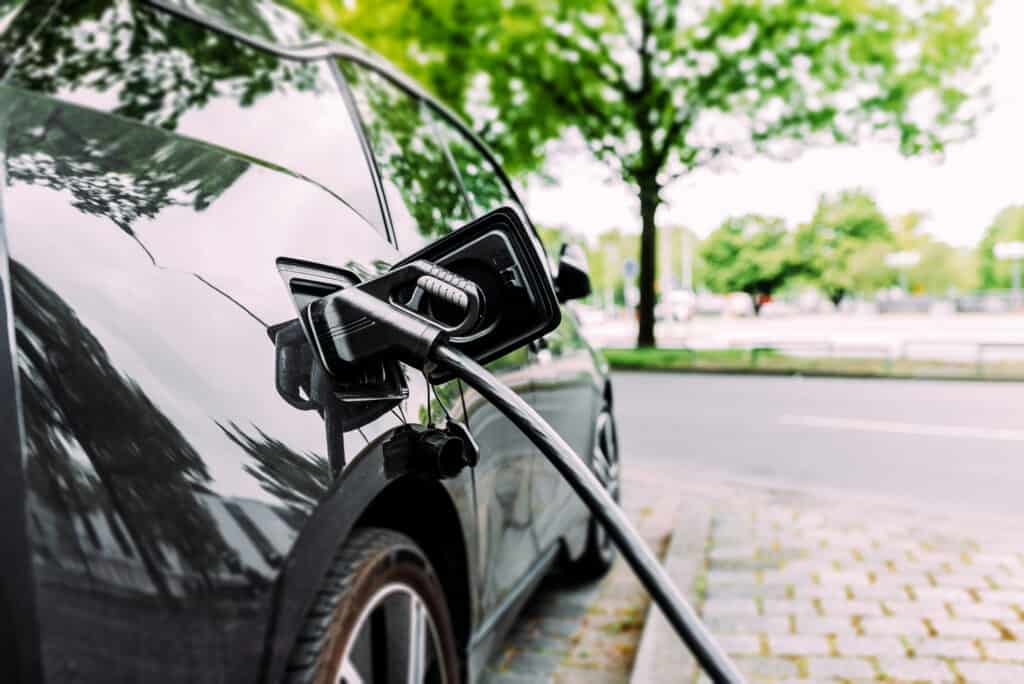The electric vehicle (EV) market is experiencing significant growth, with more consumers opting for eco-friendly alternatives. Data indicates that EV sales have expanded significantly over the past ten years, driving up demand for EV charging solutions. Reports suggest that nearly 3 million electric cars were sold globally in 2020 alone, a 41% increase from the previous year. This upward trend is driven by factors like improving battery technology, increasing government emissions regulations, and heightened consumer environmental awareness.
As the number of electric vehicles on the road continues to rise, the need for extensive and efficient charging infrastructure becomes ever more critical. This demand for better EV charging solutions paves the way for innovations that are set to transform the automotive industry.
Current EV Charging Infrastructure
Today’s EV charging infrastructure includes various charging stations, from residential setups to commercial fast-charging points. Different governments and private entities are making strides to expand this infrastructure, ensuring accessibility for all EV owners. Currently, Level 1, Level 2, and DC Fast Chargers are the three main categories of EV chargers. Level 1 chargers require a regular household socket and considerable time to charge a car. Homes and businesses frequently have Level 2 chargers, which can charge an EV in a few hours. They do, however, require particular electrical tools. In as little as 30 minutes, an EV can be charged to 80% capacity using DC Fast Chargers, primarily found in public areas.
Efforts to expand EV charging infrastructure are evident worldwide. Countries like Norway, Germany, and China lead by example, investing heavily in EV charging networks. By 2025, it is estimated that the number of public EV chargers will exceed 12 million globally, a significant increase from the current 1.3 million units.
Smart Charging Technology
Intelligent charging technology is revolutionizing the way we charge electric vehicles. These advancements include load balancing, real-time data analytics, and automated charging schedules, which optimize the charging process and reduce strain on the grid. Smart chargers can communicate with the grid, adjusting the charging rate based on electricity demand and supply conditions.
Trending Features in Smart Charging:
- Load Balancing: Distributes electrical load evenly across multiple charging stations to prevent grid overload.
- Real-time Data Analytics: Provides insights on energy use and efficiency, helping users optimize their charging habits.
- Automated Charging Schedules: To cut expenses and lessen the load on the grid, charging is automatically scheduled for off-peak hours.
These intelligent features enhance users’ charging experience and contribute to the electric grid’s overall stability. As intelligent charging technology continues to evolve, it is expected to play a pivotal role in adopting electric vehicles.
Integration with Renewable Energy
Combining EV charging with renewable energy sources, such as solar or wind power, is becoming more common. This integration helps to reduce EV’s carbon footprint even further, aligning with global sustainability goals. According to recent reports, up to 30% of new charging stations are powered by renewable energy.
One of the main advantages of this integration is the potential for “green charging.” This means that the electricity used to charge the EVs is generated from renewable sources, making the vehicle’s lifecycle more environmentally friendly. Solar-powered charging stations, for instance, provide clean energy while also reducing reliance on the traditional grid.
Incorporating renewable energy into the EV charging infrastructure is also economically beneficial. Over time, it can reduce operational costs by decreasing dependence on fossil fuels and taking advantage of natural resources. This shift supports sustainability and ensures a more resilient and future-proof energy system.
The Advent of Wireless Charging
In the EV market, wireless charging technology is a developing trend. It offers convenience by allowing vehicles to charge without physical connectors using magnetic induction. This innovation is set to make charging as simple as parking your car. The process involves a charging pad installed on the ground and a receiver on the vehicle’s underside. Electricity is transferred wirelessly between the two components when the car is positioned over the pad.
Pros of Wireless Charging:
- Convenience: Eliminates the need to plug in and unplug charging cables.
- Reduced Wear and Tear: Minimizes physical wear on the charger and the vehicle’s charging port.
- Automation: Allows for automated and hands-free charging, making it easier for users to ensure their vehicles are always ready.
Despite its many advantages, wireless charging is still in the early stages of adoption, and challenges such as higher costs and lower efficiency than wired charging must be addressed. However, ongoing research and development efforts will likely overcome these hurdles, making wireless charging commonplace in the EV charging ecosystem shortly.
Global Trends in EV Charging
Countries around the world are adopting different strategies to enhance their EV infrastructure. For instance, European and Asian initiatives focus on installing ultra-fast chargers along highways and urban areas to serve a growing number of electric vehicles.
Countries like Germany and the Netherlands are leading with comprehensive plans to install high-power charging stations in Europe. These initiatives aim to support long-distance travel for EV users and reduce range anxiety. Meanwhile, China has the largest network of EV chargers, with over 800,000 public charging stations as of 2020. The Chinese government continues to incentivize the installation of more chargers to meet the growing demand.
These global trends indicate a robust commitment to enhancing the EV charging landscape. By incorporating these examples, other nations can create efficient plans to encourage the use of electric vehicles and foster a sustainable future.
Future Predictions in EV Charging
Experts predict that the future of EV charging will include widespread adoption of ultra-fast chargers, wireless charging capabilities, and extensive use of renewable energy. Other innovations, such as vehicle-to-grid (V2G) technology, will permit EVs to feed back energy into the grid.
Ultra-fast chargers, capable of adding hundreds of miles of range in minutes, are expected to become more prevalent. It will make EVs more convenient and comparable to traditional vehicles in refueling time. Additionally, the development of bi-directional chargers will enable vehicle-to-grid technology, allowing EVs to act as mobile energy storage units.
Another area of focus will be integrating artificial intelligence and machine learning to optimize charging processes. These technologies can predict energy demand, manage loads, and enhance the efficiency of EV charging networks. As these advancements become mainstream, they will significantly impact how we consume and manage energy.





